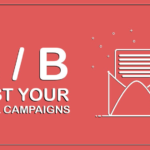Monetizing a Micro SaaS app effectively is crucial for ensuring long-term success and profitability, especially when targeting niche markets with specific needs. Micro SaaS businesses excel by offering tailored solutions to these specialized markets, allowing for highly focused and efficient monetization strategies. In this guide, we will explore the best ways to monetize your Micro SaaS app, examine various pricing models, and provide actionable insights to help your app thrive in a competitive landscape, especially with a local SEO focus.
What is a Micro SaaS App?
A Micro SaaS app is a smaller, niche-focused SaaS (Software as a Service) solution that caters to a specific audience with a particular problem. These apps often address niche problems that larger SaaS platforms may overlook, allowing them to fill a unique gap in the market. Localizing your Micro SaaS can further enhance its appeal, making it more relevant to specific geographic regions or industries.
Monetization Strategies for Micro SaaS Apps
Choosing the right monetization strategy is essential for maximizing revenue without sacrificing user experience. Here are the most effective strategies for monetizing a Micro SaaS app:
1. Subscription Model: A Recurring Revenue Stream
The subscription-based model is one of the most popular and reliable ways to monetize a Micro SaaS product. This model offers:
- Steady, Recurring Income: By offering monthly, quarterly, or annual subscriptions, you can ensure a continuous revenue stream.
- Scalability: Predictable revenue makes it easier to plan for growth, reinvest in the app, and scale the business.
- Continuous Value: As your Micro SaaS app continues to provide value, customers are likely to renew their subscriptions, increasing customer lifetime value (CLV).

Local SEO Tip:
Optimize your content and landing pages for location-based keywords. For example, if your SaaS serves businesses in a particular city, include location-specific phrases like “Best SaaS for [City]” in your web content and blog posts.
2. Freemium Model: Attract Users with Free Access
The freemium model involves offering a basic version of your app for free while charging for premium features or additional services. This approach works particularly well for attracting a large user base.
- Low Entry Barrier: Free access encourages more users to try your app without making an upfront financial commitment.
- Upgrade Potential: Once users experience the value of your free app, they are more likely to upgrade to a paid version.
- Increased Visibility: A freemium model helps in building word-of-mouth marketing and brand awareness.
Local SEO Tip:
Target your local audience by creating content that highlights how the free version of your SaaS app can solve specific problems for businesses or users in your area. This will help with organic search rankings within local markets.
3. In-App Purchases: Upsell Premium Features
In-app purchases allow users to buy additional features, tools, or services that improve their overall experience.
- Enhanced User Experience: Offer premium features like advanced functionality, extra storage, or exclusive content.
- Natural Upselling: Users who are already invested in your product are more likely to purchase extra features to improve their experience.
- Customizable Solutions: In-app purchases let users tailor the product to their needs without overwhelming them with upfront costs.
Local SEO Tip:
Create localized landing pages that detail the unique benefits of your premium features, tailored to regional user needs. For example, “Get Premium Features for Your Small Business in [Location].”
4. Advertisements: A Careful Balancing Act
Running advertisements within your app can generate additional revenue, but it’s essential to balance ads with user experience.
- Non-Intrusive Ads: Avoid bombarding users with too many ads, as this can frustrate them and lead to churn.
- Relevant Advertisements: Display ads that are relevant to your target audience, ensuring they add value rather than detracting from the user experience.
- Performance-Based Revenue: Charge advertisers based on impressions or clicks, ensuring a steady revenue stream without compromising your app’s usability.
Local SEO Tip:
Consider partnering with local advertisers and include location-specific ads that resonate with your users. For instance, ads for local businesses or events can feel more relevant and engaging.
5. Targeted Pricing Strategies: Tailoring for Your Audience
Pricing your Micro SaaS app strategically can have a huge impact on its success.
- Multiple Pricing Tiers: Offer different plans based on features or usage limits, catering to a broader audience.
- Localized Pricing: Adjust your pricing based on local purchasing power, making your app more accessible to a wider range of users.
- Upselling Opportunities: As users’ needs grow, offer higher-tiered plans or additional features.
Local SEO Tip:
Develop location-specific pricing strategies. For instance, offer discounts for users in specific regions or create pricing plans based on local economic conditions.
6. Customer Retention: The Key to Long-Term Success
For Micro SaaS apps, customer retention is essential since they typically serve niche markets.
- Excellent Customer Support: Providing high-quality support helps retain users and reduces churn.
- Regular Product Updates: Continuously improve your product based on customer feedback.
- Loyalty Programs: Offer loyalty programs or discounts for long-term subscribers to increase retention.
Local SEO Tip:
Engage with your local audience through local events, webinars, or meetups. Encourage local users to provide testimonials or reviews, which can help boost your app’s reputation in local searches.
7. Marketing and Community Engagement: Building a Loyal User Base
Building a community around your Micro SaaS app can significantly improve user engagement and loyalty.
- Social Media and Forums: Leverage social media platforms, local forums, and niche communities to build a dedicated user base.
- Content Marketing: Create SEO-optimized blog posts, case studies, and tutorials that address your local audience’s specific pain points.
- User Feedback Loop: Actively collect user feedback to drive product improvements and reinforce customer loyalty.
Local SEO Tip:
Use location-based keywords in your blog posts and website content. Engage with local online communities and encourage your users to share their experiences on local review sites.
How to Determine the Right Price for Your Micro SaaS App
Determining the right price for your Micro SaaS app can make or break its success. Here’s a step-by-step approach to finding the optimal price point:
1. Understand Your Value Proposition
Clearly define what makes your app unique and how it solves specific problems for your target users. Your value proposition should be compelling and easy to communicate.
- Conduct surveys or interviews with potential customers to understand what they value most.
- Highlight unique features that differentiate your app from competitors.
2. Analyze Competitors
Study your competitors’ pricing models to better understand market standards.
- Compare features, pricing tiers, and user feedback.
- Position your pricing slightly lower than your competitors to attract early adopters when entering the market.
3. Choose the Right Pricing Model
Popular pricing models for Micro SaaS apps include:
- Per-User Pricing: Charge based on the number of users.
- Tiered Pricing: Offer different pricing tiers based on features or usage.
- Usage-Based Pricing: Charge users based on how much they use your product.
- Flat Rate Pricing: Offer a single price for full access to all features.
4. Test Pricing Strategies
Run A/B tests with different pricing strategies and monitor user behavior.
- Offer free trials or limited-time promotions.
- Track conversion rates and user engagement to see which pricing model works best.
5. Psychological Pricing Techniques
Using psychological pricing strategies can influence how customers perceive value.
- Charm Pricing: Use prices like $29 instead of $30 to make the product feel cheaper.
- Anchoring: Present higher-priced plans next to lower-priced ones to make the latter seem more attractive.
6. Monitor Feedback and Adjust
Continuously gather feedback from users and adjust your pricing strategy as needed.
- Stay flexible and make pricing changes based on market trends and customer feedback.
- Offer special deals or discounts based on local events or holidays to encourage signups.
Best Pricing Strategies for Micro SaaS Apps
Here are some of the most effective pricing strategies for maximizing revenue:
1. Tiered Pricing
- Offer 3-4 pricing tiers to appeal to different customer segments.
- Clearly outline the benefits of each tier, encouraging users to upgrade as their needs grow.
2. Freemium Model
- Offer a free version of your app to attract a larger user base.
- Ensure that the free version has enough limitations to encourage users to upgrade to a paid plan.
3. Usage-Based Pricing
- Charge customers based on how much they use the app, offering flexibility for smaller businesses or startups.
- This model works well for businesses that need scalability.
4. Per-User Pricing
- Charge based on the number of users, making it easy for teams to scale their usage as they grow.
5. Flat Rate Pricing
- Offer a single price for full access to all features, simplifying decision-making for users who want an all-inclusive package.
Conclusion: Balancing Value and Revenue
Successfully monetizing a Micro SaaS app requires balancing value with revenue, ensuring that your pricing aligns with the app’s value and customer expectations. By using a combination of subscription models, freemium approaches, and targeted pricing strategies, you can create a sustainable revenue stream that keeps users engaged and satisfied.
Key Takeaways:
- Understand your app’s unique value and market it effectively to your niche.
- Offer multiple pricing options to appeal










